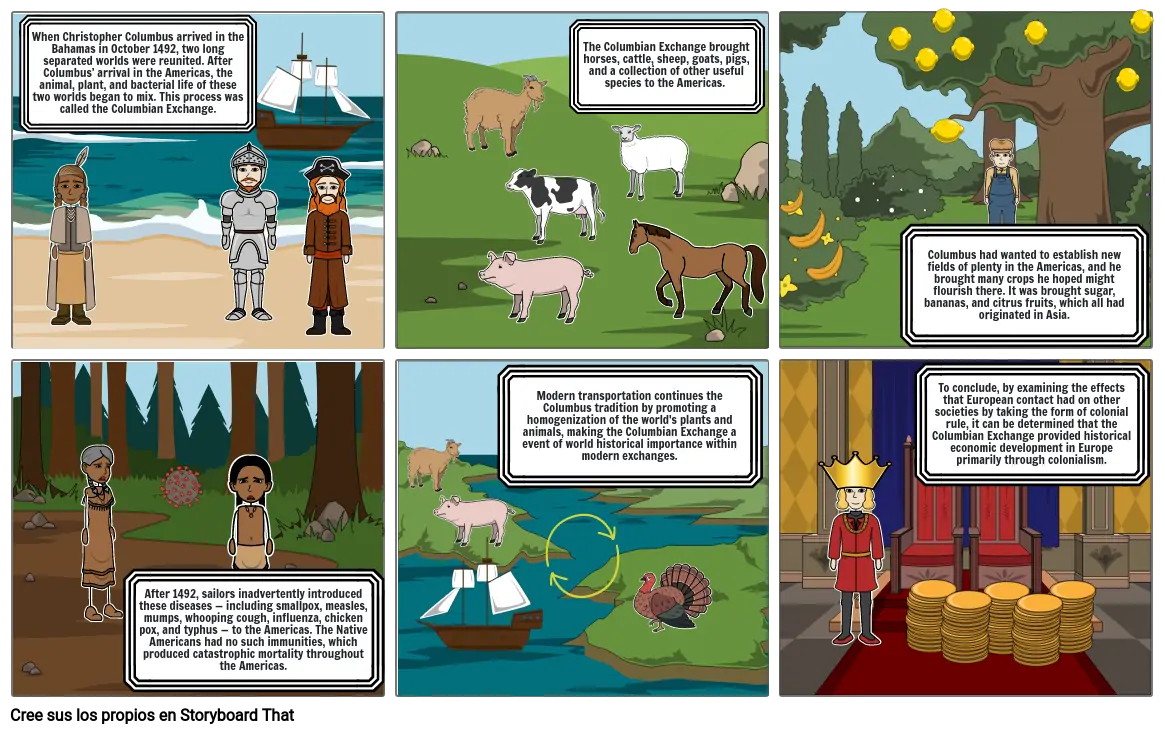The Columbian Exchange

Storyboard Text
- When Christopher Columbus arrived in the Bahamas in October 1492, two long separated worlds were reunited. After Columbus’ arrival in the Americas, the animal, plant, and bacterial life of these two worlds began to mix. This process was called the Columbian Exchange.
- The Columbian Exchange brought horses, cattle, sheep, goats, pigs,and a collection of other useful species to the Americas.
- Columbus had wanted to establish new fields of plenty in the Americas, and he brought many crops he hoped might flourish there. It was brought sugar, bananas, and citrus fruits, which all had originated in Asia.
- After 1492, sailors inadvertently introduced these diseases — including smallpox, measles, mumps, whooping cough, influenza, chicken pox, and typhus — to the Americas. The Native Americans had no such immunities, which produced catastrophic mortality throughout the Americas.
- Modern transportation continues the Columbus tradition by promoting a homogenization of the world's plants and animals, making the Columbian Exchange a event of world historical importance within modern exchanges.
- To conclude, by examining the effects that European contact had on other societies by taking the form of colonial rule, it can be determined that the Columbian Exchange provided historical economic development in Europe primarily through colonialism.
Over 30 Million Storyboards Created

